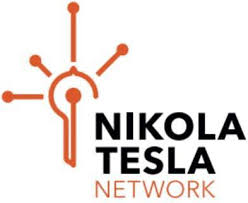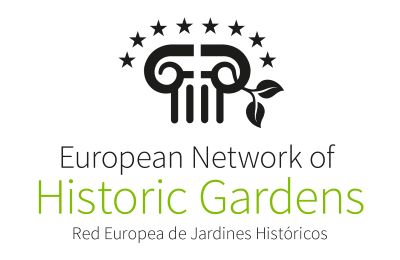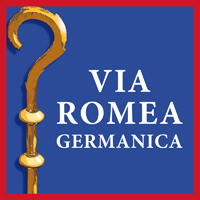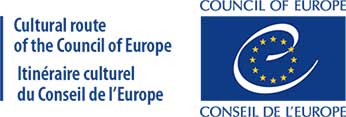
Application for certification
(2019-2020 cycle)
Each year, the Enlarged Partial Agreement on Cultural Routes of the Council of Europe (EPA) awards the certification "Cultural Route of the Council of Europe" to cultural route network applicants fulfilling the criteria set out in Council of Europe Committee of Ministers Resolution CM/Res(2013)67.
3 candidates networks to the "Cultural Route of the Council of Europe" certification were subject to evaluation in the 2019-2020 Certification Cycle:

Responsible Network: Nikola Tesla Network
Website: www.nikolatesla-network.eu
Headquarters: Budačka 55, 53000 Gospić (CROATIA)
President: Ivan RADOŠEVIĆ
Manager: Dubravka DAVIDOVIC
The Nikola Tesla Network is an invitation to a cultural, playful and scientific discovery of the work and the myth of Nikola Tesla.
The multiplicity of readings and approaches related to what Nikola Tesla represents as a scientist, whose creations are still everywhere around us, enriches the understanding of the evolution of the industrial world as much as our daily life. Nikola Tesla, genius still too little known to the general public, yet has left his mark on the technological and modern world as we know it today.
The first objective of the network is to make the life and the work of this extraordinary man known, first of all to the population of the places where he studied, worked, created. In the footsteps of Tesla, starting from the small village of Smiljan in Croatia, visitors are able to travel to all the sites and places that Tesla visited during his studies or his professional activity, but also all the places that he influenced by his inventions, or by the myth that developed around this strange character.
Countries involved in the Network: 54 members in 15 countries: Austria (1), Bosnia and Herzegovina (2), Croatia (35), France (1), Hungary (1), Russian Federation (1), Serbia (3), Slovenia (2), Czech Republic (1), Australia (1), Canada (1), China (1), Republic of South Korea (1), United States (2), Venezuela (1).

Responsible Network: European Network of Historic Gardens
Website: www.europeanhistoricgardens.eu
Headquarters: Masia de Can Saragossa, Avenida Vila de Tossa, s/n., ES-17310 Lloret de Mar (SPAIN)
President: Jaume DULSAT RODRÍGUEZ
Manager: Anna FUENTES FERNANDEZ
The Historical Gardens of Europe are inextricably linked to places of great historical significance.
Royal palaces, castles, towns, monasteries, nobility and bourgeois villas, that is, the residences and decision centres of historical personalities: that is why, in addition to its intrinsic artistic and natural values (botanical, landscape, ornamental, etc.), they always have a high historical value, by associating with the centres of political decision and social prestige of different nations/regions. The botanic parks and the postcolonial gardens are linked to the European expansion around the World, during the Discoveries times (XV-XVII centuries) and the Colonialism period (XIX-XX centuries).
The European Network of Historic Gardens is a non-profit association founded by the Town Corporations of Lloret de Mar (Girona) and Aranjuez (Madrid, through the Foundation Aranjuez-Cultural Landscape), and the Laboratory of Heritage, Creativity and Cultural Tourism (LABPATC) at the University of Barcelona. It aims to unite managing bodies of Historic Gardens in Europe in order to promote and raise awareness of Historic Gardens, as defined by the International Historic Gardens Committee, ICOMOS-IFLA in the 1981 Florence Charter.
Countries involved in the Network: 29 members in 5 countries: Germany (1), Italy (5), Poland (2), Portugal (15), Spain (6).

Responsible Network: European Association of the Via Romea Germanica
Website: www.viaromeagermanica.eu
Headquarters: Bolzano Tourist Office, Via Alto Adige 60, IT-39100 Bolzano (ITALY)
President: Flavio FOIETTA
Manager: Luigi ZOPPELLO
The Via Romea Germanica is an international pilgrimage route which stretches from the German city of Stade to Rome, running almost 2.200 kilometres, and passing through 3 countries: Germany, Austria and Italy.
The route is based on a journey described by the 12th-century Abbot Albert from Stade. In his Annales, the monk describes the best pilgrimage routes for northern travellers to Rome, with information on various routes including places and distances to be covered, or conditions of the roads.
Today, the Via Romea Germanica is a bridge between the North and the South of Europe and promotes a journey to rediscover Europe's roots and to reencounter and understand the different cultures that build our common identity. It is first of all a route of dialogue between European peoples and faiths, linking together two main European cultural identities: the Germanic identity in the North and Central Europe and the Italic identity in the South. It has fully involved the Catholic belief and the Lutheran faith in a cultural and tourism cooperation project.
Countries involved in the Network: 3 members in 3 countries: Austria (1), Germany (1, composed of 25 members), Italy (1, composed of 83 members).



